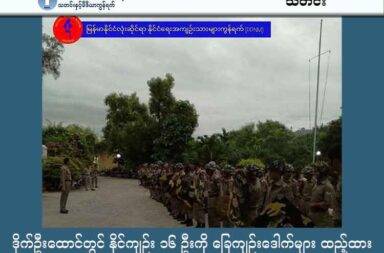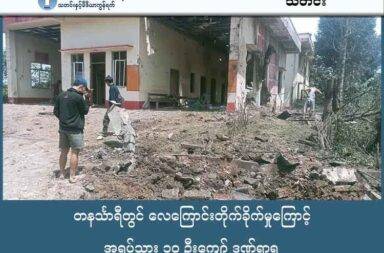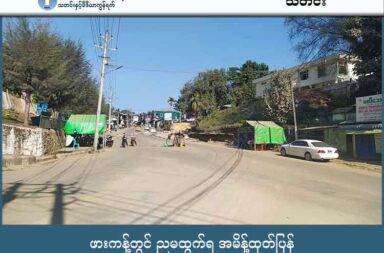Northern Alliance Calls for China Role, Monitoring
By NETWORK MEDIA GROUP (NMG)
Sunday, October 6, 2019
The four ethnic armed organizations (EAOs) belonging to the Northern Alliance say they want China to play a role in ceasefire talks with the Burmese government and monitoring to prevent clashes if an agreement is reached.
Maj. Mai Aik Kyaw, who is in charge of the information department of the Ta’ang National Liberation Army (TNLA), noted that armed groups that have signed the Nationwide Ceasefire Agreement (NCA) continue to clash with government forces.
“Some EAOs have clashes even after signing the NCA. It’s still unclear who is going to solve this kind of problem. Therefore, we want the formation of a conflict-mediation committee. If there is no demarcation, clashes can easily occur,” Maj. Mai Aik Kyaw told NMG.
He added, however, that the Burma Army said during talks last month that there is no need for demarcation because all sides in Burma’s various conflicts are living within the same country.
During a meeting with representatives of the Burmese government and the Burma Army held in the eastern Shan State city of Kengtung on September 17, the Northern Alliance also proposed that China should be involved in a conflict-monitoring committee.
“They [the government and army] do not want China to be involved. But if they don’t accept China’s direct involvement, we at least want to put China forward as a ‘witness’ to the formation of the monitoring committee,” said Maj. Mai Aik Kyaw.
The four members of the alliance also said that they all wanted to sign a bilateral ceasefire together, at the same time and place, contrary to the Burma Army’s preference for separate peace talks with each group.
“For military issues, they [the army] want to negotiate with each EAO separately. They don’t want to discuss military issues with all four EAOs at the same time,” said Maj. Mai Aik Kyaw.
Another member of the alliance, the Kachin Independence Army (KIA), also rejected a Burma Army proposal for “temporary” ceasefires.
“The main difference between the two sides is that the Burma Army wants to sign ‘temporary’ ceasefire agreements. But ‘temporary’ agreement won’t allow us to discuss the issue of IDPs [internally displaced persons]. IDPs must be able to return to their villages. That doesn’t work with ‘temporary’ ceasefire agreements,” Col. Naw Bu, the head of the KIA’s information department, told NMG.
Despite the lack of progress in reaching a ceasefire deal, the two sides said they would continue talks as part of a seven-point agreement that came out of their latest meeting.
The agreement also includes discussions on the repositioning of army troops, a military code of conduct, the opening of communication channels and liaison offices, talks aimed at establishing a framework for negotiations on signing the NCA, and efforts to resolve the IDP issue.
According to the Kachin Peace Creation Group (PCG), one of the greatest hurdles to progress is the government’s preconditions for continuing talks.
“There are preconditions set by the government. The EAOs don’t want preconditions. They want to sign a bilateral ceasefire agreement without any preconditions. So they need to keep talking until there are no differences between them,” said Sam Awng of the Kachin PCG.
Both parties have agreed to meet again in October. Sam Awng said that government representatives are busy preparing for the next round of talks. The two sides are expected to begin negotiating the time and place of the next meeting after the end of the Buddhist Lent later this month.


